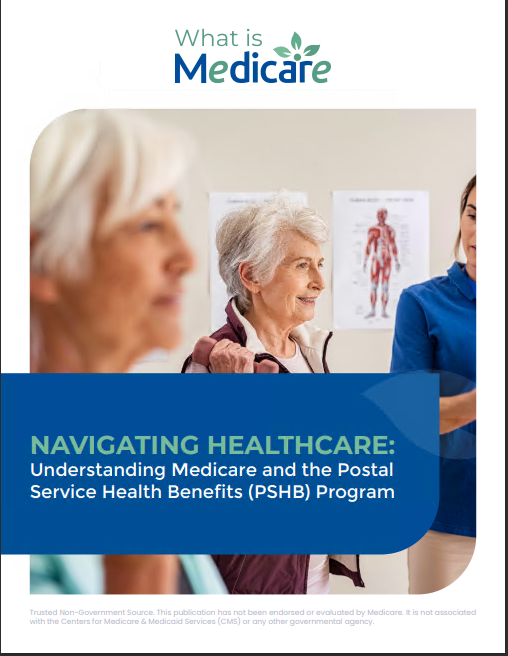Key Takeaways
-
Understanding Medicare eligibility rules can help you plan your healthcare in retirement more effectively.
-
From age requirements to specific circumstances, these rules determine when and how you can access Medicare benefits.
Exploring Medicare Eligibility: What You Need to Know
Planning for healthcare in retirement starts with understanding Medicare’s eligibility rules. These rules decide when you can enroll, what coverage you’re entitled to, and how to avoid potential penalties. Whether you’re nearing age 65 or exploring coverage for unique situations, here’s a breakdown to keep you informed and prepared.
Who Qualifies for Medicare?
The Basics: Age and Work History
Most people qualify for Medicare at age 65. Eligibility typically depends on your work history or that of a spouse. If you or your spouse have worked for at least 10 years (40 quarters) and paid Medicare taxes, you’re likely eligible for premium-free Medicare Part A. For Part B, enrollment is optional but highly recommended unless you have other credible coverage.
Under 65? Special Circumstances Apply
If you’re under 65, you might still qualify for Medicare if you have a disability and have been receiving Social Security Disability Insurance (SSDI) for 24 months. Other specific conditions, such as End-Stage Renal Disease (ESRD) or Amyotrophic Lateral Sclerosis (ALS), may also grant you immediate eligibility.
Breaking Down the Enrollment Periods
Initial Enrollment Period (IEP)
Your IEP is a seven-month window that begins three months before the month you turn 65, includes your birth month, and extends three months after. Enrolling during this period ensures your coverage starts without delays or penalties.
General Enrollment Period (GEP)
If you miss your IEP, you can enroll during the GEP, which runs annually from January 1 to March 31. However, coverage begins on July 1, and late enrollment penalties may apply.
Special Enrollment Period (SEP)
SEPs are available if you have qualifying life events, like losing employer coverage. These periods let you enroll outside of standard timelines without facing penalties.
The Importance of Timing
Avoiding Late Enrollment Penalties
Missing your enrollment window for Part B or Part D can result in lifetime penalties. For Part B, the penalty adds 10% to your monthly premium for every 12-month period you delay enrollment. For Part D, penalties depend on the length of time you went without coverage.
Coordinating with Employer Coverage
If you’re still working at 65 and covered by employer insurance, you may qualify for a SEP. Always confirm whether your employer’s plan counts as credible coverage to avoid unexpected penalties later.
What Each Medicare Part Covers
Part A: Hospital Insurance
Part A covers inpatient hospital stays, skilled nursing facility care, and some home health services. Most people don’t pay a premium for Part A if they have sufficient work credits.
Part B: Medical Insurance
Part B covers outpatient services, preventive care, and medically necessary services like doctor visits and lab tests. Unlike Part A, Part B requires a monthly premium.
Part C: Medicare Advantage
This option combines Parts A and B and often includes additional benefits like vision or dental. However, costs and coverage vary depending on the plan.
Part D: Prescription Drug Coverage
Part D provides coverage for prescription drugs. Enrollment is optional, but penalties apply if you go without creditable drug coverage.
Income-Related Adjustments
Higher Premiums for Higher Earners
If your income exceeds certain thresholds, you’ll pay an Income-Related Monthly Adjustment Amount (IRMAA) for Parts B and D. These amounts are based on your tax returns from two years prior. Planning for these costs can prevent surprises.
Understanding the Income Limits
In 2025, the IRMAA thresholds are $106,000 for individuals and $212,000 for couples. If your income exceeds these limits, you’ll see higher premiums.
Medicare and Other Insurance
Coordination of Benefits
Medicare works with other insurance to ensure coverage is not duplicated. For example, employer insurance may pay first, and Medicare acts as secondary coverage. It’s essential to know which plan takes priority.
TRICARE and FEHB
If you’re a federal employee or military retiree, you may have TRICARE or Federal Employees Health Benefits (FEHB). Medicare often integrates with these programs, but rules differ depending on your situation.
Planning for Healthcare Costs
Medicare’s Cost-Sharing Structure
Medicare doesn’t cover 100% of costs. You’ll encounter deductibles, copayments, and coinsurance. Understanding these out-of-pocket expenses can help you budget more effectively.
Medigap Policies
Medigap plans can fill gaps in Original Medicare coverage, like deductibles and coinsurance. These policies are standardized but come with additional premiums.
Key Changes in 2025
Out-of-Pocket Cap for Part D
A major update for 2025 is the $2,000 cap on out-of-pocket prescription drug costs under Part D. This change provides financial relief for those with high medication expenses.
New Payment Flexibility
You can now spread out-of-pocket drug costs over the year with the Medicare Prescription Payment Plan. This helps manage expenses more predictably.
How to Apply for Medicare
Online or In-Person
Applying for Medicare is straightforward. You can enroll online through the Social Security Administration or visit a local office.
Documents You’ll Need
Have your Social Security number, proof of residency, and work history ready. If enrolling based on a spouse’s work history, you’ll need their information too.
Wrapping It Up: Make Informed Decisions
Medicare eligibility rules may seem complex, but understanding them can empower you to make the best choices for your healthcare needs in retirement. Be proactive, mark your timelines, and explore all your options to ensure you’re covered without unnecessary costs or penalties.










